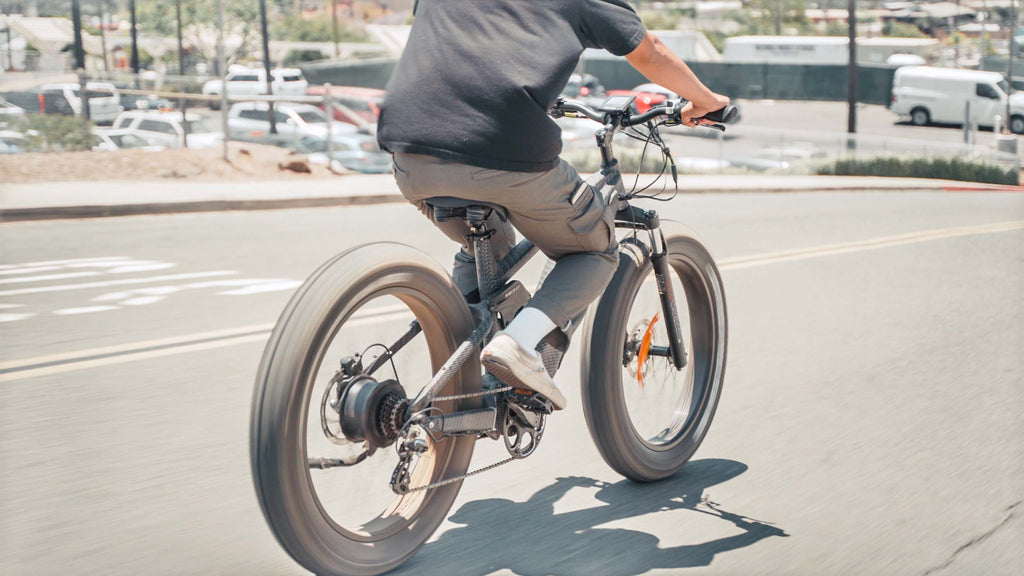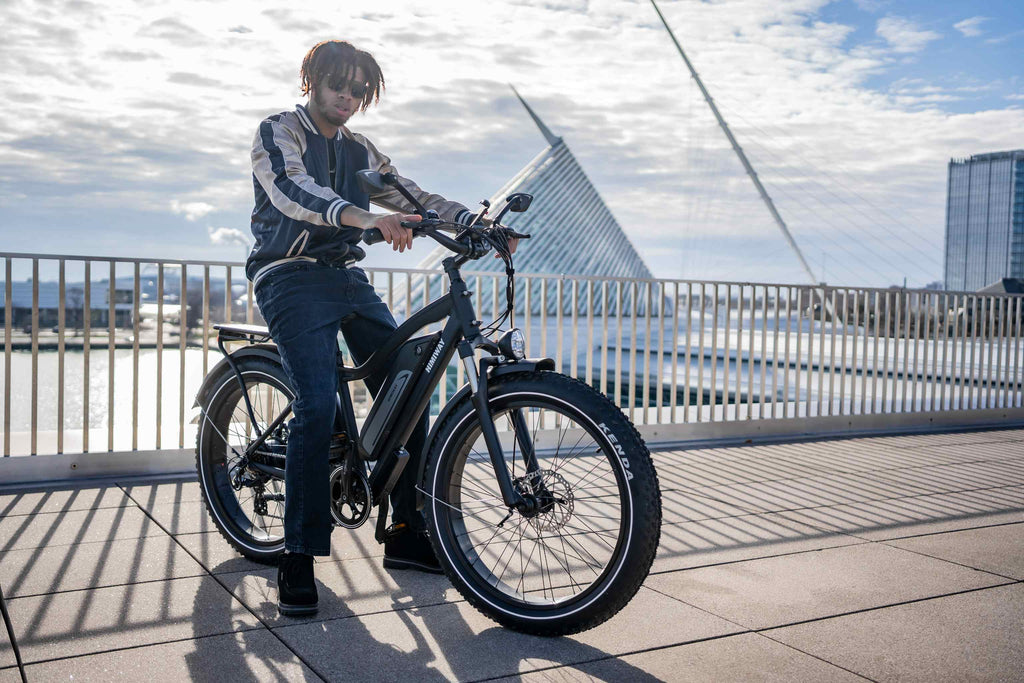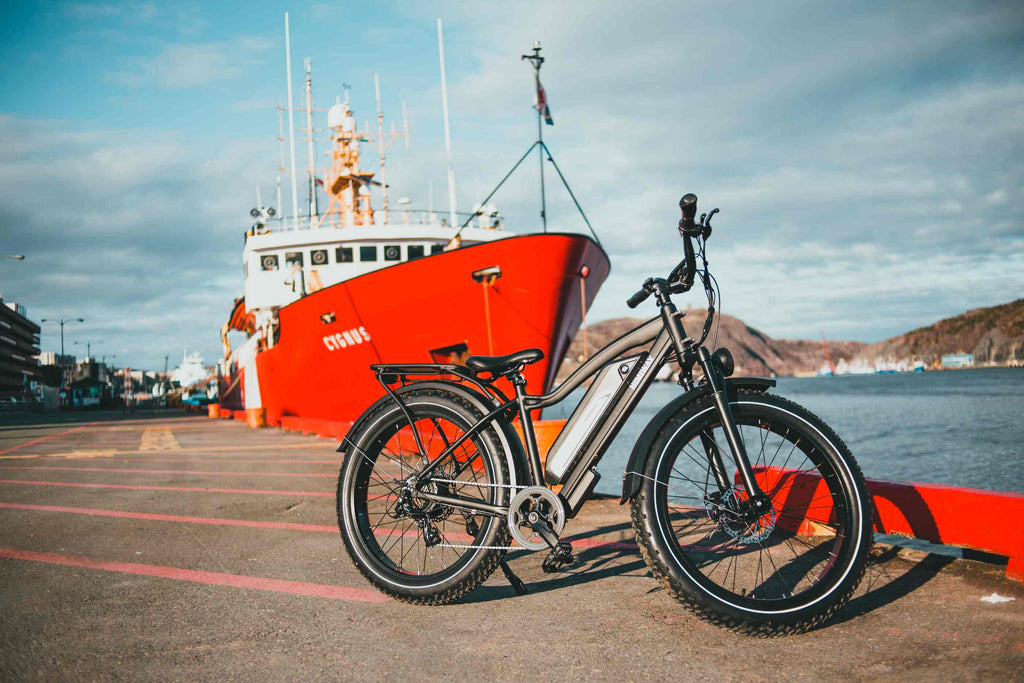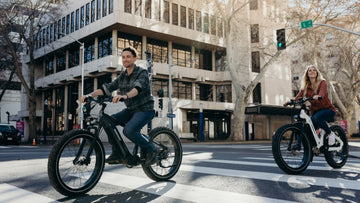Electric bikes are becoming increasingly popular for commuting, recreation, and adventure. E-bikes make cycling accessible to more people with their combination of human power with an electric motor. The fat tire electric bike is especially versatile; its tires handle everything from sand to snow.
Do you own a fat tire electric bike but don't know the correct tire pressure to apply? Like any other bike, fat tire e-bikes require proper tire pressure to perform their best. This article will tell you everything you need to know about electric bike tire pressure. Let’s get into it without further ado.

What Is Psi on Your Electric Bike?
Psi (pounds per square inch) is the standard unit of measure for tire pressure. It is important for proper tire inflation.
While the required psi varies based on different factors, bicycle tires typically require higher pressure than other tires. This is because bicycles have smaller contact patches.
The optimal psi for a given electric bike depends on the tire design, bike weight, rider weight, and riding conditions. To know the psi range recommended by your bike's manufacturer, check the sidewall of your tire, and know moped bike levels for different skill levels.
How Much Tire Pressure Does a Fat Tire E-Bike Need?
How much pressure your fat tire bike needs depends on factors like your tire width, your weight, the terrain you're cycling on, the weather, etc.
Fat tire e-bikes have oversized tires, about 3.5 to 5 inches wide, to help improve stability and traction. The large contact patch of fat tires requires a relatively low pressure of 15 to 30 psi. For example, the Himiway Cruiser fat tire e-bike has 26 x 4-inch tires ideal for all terrain. Himiway recommends inflating these tires to just 20 to 30 psi.
Always follow the manufacturer's guidelines for your specific tires. While you may see high volumes like 80 psi on the tire sidewall, going this high would result in a harsher ride.
Effects of Incorrect Tire Pressure
Underinflating or overinflating your electric bike tires can adversely affect your bike's overall performance. Let's examine the effects of underinflating and overinflating your tires one after the other.
Underinflated Tires:
Riding underinflated tires can negatively impact an e-bike's handling, efficiency, and tire life. Underinflating your tire reduces stability and cushioning, making the bike prone to damage from bottoming out on bumps. Underinflation also increases rolling resistance, which cuts into the battery range life. It also leads to uneven tire wear, a higher risk of pinch flats and punctures, and potential damage to wheels and rims from bottoming out. Furthermore, the decreased air pressure results in poorer braking power and control.
Overinflated Tires:
Conversely, overinflating the tires on a fat tire electric bicycle can also lead to several issues. When the tire pressure is too high, the tires do not have enough give and flex. This can make the ride overly stiff and jarring because of the inability of the tires to absorb bumps in the road. Additionally, overinflated tires have less surface contact with the ground. This decreases traction, braking power, and handling ability.
Overinflated tires are also more prone to punctures and cracks in the sidewall as the tire rubber is stretched too thin. Moderately overinflating fat tires by 5-10 psi over the recommended level may not cause immediate problems. However, consistently riding with tires inflated to the maximum pressure and beyond will accelerate wear and shorten the lifespan of the tires.
Factors Affecting the Ideal Tire Pressure
Here are the factors determining the ideal tire pressure:

Tire Size and Width
Generally, the wider the tire, the lower the needed pressure. Large-volume fat tires require much less psi than narrow road bike tires to perform well. It's best to always start with the manufacturer's recommendations based on your particular tire size.
Rider Weight and Preferences
The rider's size also determines the amount of e-bike tire pressure needed. A heavier rider will need slightly higher pressures, while a lighter rider can go slightly lower. Personal preferences for a softer or firmer ride can also influence ideal pressure. You can experiment with different pressures to find the best pressure for you.
Terrain and Riding Conditions
Where you ride your bike also determines your e-bike tire pressure. Smooth pavement allows higher pressures, while rocky, rooted, sandy, or muddy trails call for lowering pressure for increased traction and control. Likewise, loose surfaces like gravel or snow require lower psi. Always be prepared to fine-tune based on riding conditions.
Discover the Best Fat Tire Ebikes with Himiway
Himiway offers durable electric bikes, including excellent fat tire models.
Their Himiway Cruiser has 26” x 4” Kenda fat tires, a powerful 750W motor, and a 48V 17.5Ah Samsung/LG battery for a 35 to 60-mile range. The cruiser frame provides comfort across various terrains.
Another top choice is the Himiway Zebra all-terrain electric fat bike with similar 26” x 4” fat tires but a step-thru frame for easy mounting. The Zebra handles hills easily with its 750W motor and 48V 20Ah Samsung battery. This durable electric bike can go up to 80 miles per charge.
Both models are quality fat tire e-bikes ready for adventure.
Tips for Maintaining Proper Tire Pressure
Do you want to maintain proper tire pressure always? Follow these tips to stay on top of your tire pressure game:

1. Regular Pressure Checks and Adjustments
One of the best ways to maintain proper tire pressure is to check pressures before every ride and add air as needed. Temperature changes and slow leaks will lower pressure over time. A high-quality pump with a pressure gauge makes it easy.
2. Using a Reliable Tire Pressure Gauge
Don't rely solely on a pump's built-in gauge. Invest in a high-accuracy digital tire gauge for precise pressure measurements. Compare its reading to your pump gauge periodically to ensure it's accurate.
3. Considering Temperature and Weather Conditions
Heat causes air expansion, which increases pressure, while cold temperatures decrease pressure. Adjust accordingly if big temperature swings occur. Also, reduce psi for wet conditions and increase for dry-packed surfaces.
Conclusion
Proper inflation is crucial for fat tire e-bike performance and preventing tire damage. Check pressure regularly and always inflate tires within the recommended range for best performance and safety. Follow our tips to keep your wide tires in top shape all year round. And if you want to shop for the best fat tire e-bikes, Himiway offers excellent fat tire models like the Zebra and Cruiser.





























